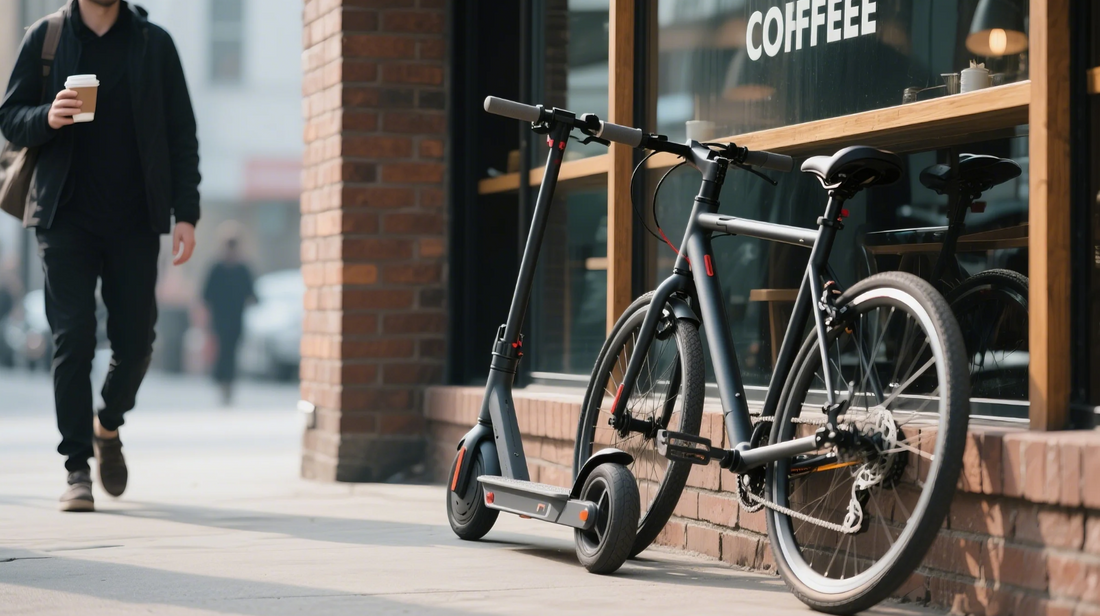
E-Scooters vs. Bikes for Commuting: Which is the Best Choice?
Share
E-Scooters vs. Bikes for Commuting: Which is the Best Choice?
E-scooters vs. bikes for commuting is a hot topic in today’s urban transport discussions. As cities become more congested, people are seeking efficient and sustainable methods of getting from one place to another. Both e-scooters and bicycles offer unique advantages and drawbacks, making the decision dependent on a variety of factors including personal preference, budget, and commuting distance.
When considering e-scooters, one of the primary benefits is their ease of use. With minimal learning curve, almost anyone can quickly learn to ride an e-scooter. Compact and lightweight, they can easily be stored and transported, ideal for the urban commuter. Furthermore, e-scooters are efficient for short distances, allowing users to zip through traffic and reach their destinations in a fraction of the time it would take to drive a car or even cycle in a busy area. The convenience of electric-powered scooters also means that little physical effort is required, making them an attractive option for those who may be deterred by the exertion associated with cycling.
However, e-scooters can come with downsides. The battery life may limit the distance a rider can travel before needing to recharge, and riders may find themselves searching for a place to charge in some cases. Safety can also be a concern, as e-scooter riders are often less visible on the road compared to cyclists. Moreover, regulations regarding e-scooter usage differ across regions, and in certain areas, riding on sidewalks or streets may not be permitted.
On the other hand, bikes offer a more traditional commuting option. They provide a greater sense of stability, and cyclists often feel safer maneuvering on roads. Biking is also an excellent form of physical exercise. Many individuals enjoy the health benefits associated with cycling such as improved cardiovascular health and muscle tone. For longer distances, bikes typically allow riders to travel farther without the constraints of battery life. Moreover, cyclists can benefit from existing bike lanes that many cities have increasingly allocated to promote bike commuting.
Yet, cycling can require more effort, especially when navigating hilly terrains, which could discourage some potential riders. Furthermore, the cost of a bike can be higher initially compared to e-scooters, especially for high-quality models. Maintenance is also a consideration, as bikes require regular upkeep, including tire changes, brake adjustments, and chain lubrication.
Ultimately, the choice between e-scooters and bikes for commuting will depend on the individual’s needs and circumstances. For those seeking a quick, low-effort ride over shorter distances, e-scooters may prove to be more beneficial. Conversely, individuals looking for physical exercise, the ability to ride longer distances, and who desire a more stable commuting option may find bikes more suitable.
In addition to personal preferences, other factors such as city infrastructure, traffic conditions, and environmental aspects should also be considered when choosing between e-scooters and bikes for commuting. Urban areas with well-developed cycling lanes and a strong biking culture may encourage biking, while cities that promote electric transportation through e-scooter rentals and dedicated paths could sway commuters towards e-scooters.
In conclusion, both e-scooters and bikes have their own sets of advantages and disadvantages. Reflecting on what best aligns with one's commuting style, distance, and lifestyle preferences is crucial. Considering sustainability, health benefits, and overall convenience will help individuals make informed decisions regarding the best commuting option for them. As urban transportation continues to evolve, e-scooters vs. bikes for commuting will remain a prominent discussion, welcoming diverse experiences and solutions for modern city dwellers.

